Wounded İzmir retains its spirit despite trauma of the earthquake
Duvar English columnist Paul Benjamin Osterlund shares a look at İzmir, the region, and its history of seismic activity in the wake of the October 30 earthquake that killed 115 people in Turkey.
Paul Benjamin Osterlund / İZMİR
“Pay attention to the place where you are staying, it's shaking constantly around here,” wrote a friend as I boarded a plane from Istanbul to Izmir on the first Tuesday of November. An earthquake measuring 7.0 on the Richter scale rattled the Aegean on the previous Friday, and my friend's family quickly moved from their multistory apartment in the city of Manisa to a single-floor home in a nearby village.
“If the epicenter was here we would definitely be gone. The building is like paper and it rocked like a cradle,” she said.
The powerful quake permeated the region, and it was felt nearly 500 kilometers away in Istanbul. It damaged buildings and killed two on the Greek island of Samos, created a tsunami in the picturesque Turkish district of Seferhisar and toppled modern apartments in the middle-class Izmir districts of Bayraklı and Bornova, killing 115 people in Turkey and and causing outrage over the scandalous circumstances that led to the deadly destruction.
“İzmir is a seismically-active area. We are so used to earthquakes that the ones below a magnitude of 4 are not even deemed newsworthy. But this one was painfully different,” said Ali Kıncal, a lifelong İzmir resident currently pursuing a PhD in Economics.
Turkey is no stranger to the earth rumbling. Major fault lines criss cross Anatolia, and earthquakes both benign and disastrous have been a constant for millennia in the cradle of civilization. The last major quake to cause havoc in İzmir was in 1928, where 50 people were killed. Much more common are the light trembles that are felt time and time again.
On August 17, 1999, the worst earthquake in the country's history ravished the province of İzmit, Istanbul's neighbor to the east. Official figures put the death toll at 17,000, but it is widely believed that the actual figure was three or four times higher. The quake throttled certain districts of Istanbul, particularly the Marmara coastal areas of Zeytinburnu and Avcılar, where many apartment complexes were built on soft land.
Though the damage was scant by comparison, the October 30 earthquake was no less terrifying for those who felt it.
“It was unlike any I had experienced before. It was extremely severe and it lasted about 40 seconds, which felt like eternity. After about ten seconds of that terrible shaking, I took position near my bed at some point, basically thinking, 'this is it, this is how it ends,'” Kıncal said.
Wounds still have not healed from the quakes of the country's recent past, including one in the eastern city of Van in 2011 that killed more than 600 people. Years later, the city still bears the signs of the damage done. The reality that a major earthquake is more than likely to strike Istanbul in the near future looms over the city, as the potential death toll could dwarf that of the 1999 quake. In January of this year, an earthquake struck the southeastern city of Elazığ, killing 41.
“I was born and raised in Izmir. I left the city for university right after the big 1999 earthquake. I remember the quake was so powerful even in Izmir that it left us all with a traumatic experience. Until that year we used to have earthquakes every now and then. Their magnitudes were rarely over 6, usually in between 4.5 to 5.5, at most 5.8 as far as I recall. Those around 4 were so common that we did not care to go outside after they happened,” said Cavidan Soykan, an area resident and guest researcher at the Institute for Migration Research and Intercultural Studies.
“Although the quakes were so common, we Izmirians somehow believed that they would never be destructive. Unfortunately, we were mistaken, naive and at worst, very unprepared. I do not recall any kind of instruction that was given at school or any kind of emergency plan that was made up until the 1999 quake,” Soykan added.
Startling footage emerged from Izmir on October 30 showing a teenager in an internet cafe tossing off his headphones and running for the door, and the office of an advertising agency rocking back and forth. Screams punctuate the eerie video, as two women working at a table side by side hold each other and duck down, while a man warns his colleagues to stay away from the windows.
That office was in Bornova, which saw the most damage in the city together with its neighboring district Bayraklı. Lying just north of the city center, these are mostly middle to upper-middle class areas, with stretches of modern, eight-story buildings. The İZBAN suburban train passes through Bayraklı, which straddles the gulf that Izmir is wrapped around.
On the other side of the tracks, there is a dismal, outdated strip of industrial warehouses and factories that ends where the Folkart Towers begin. These imposing 47-story skyscrapers were built with curves and waves as if they were swaying, a bizarre sight to behold after the earthquake. Unlike many of the buildings nearby, they appeared unharmed. On the ground-floor of the complex lies an Aston Martin dealership.
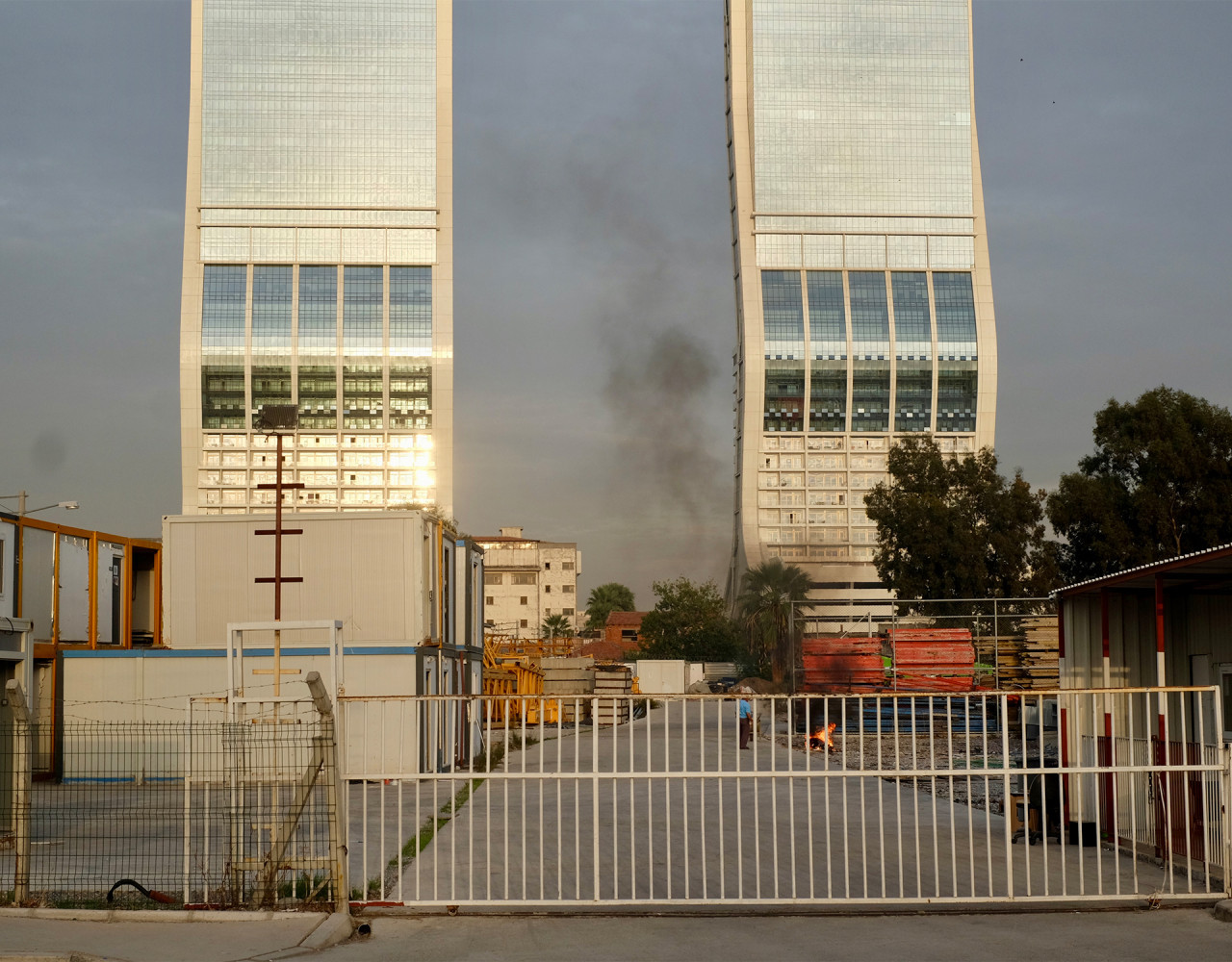
The response on the part of locals and volunteers from outside the city was swift and impressive, and the trend of earthquake diplomacy continued as President Recep Tayyip Erdoğan and his Greek counterpart Kyriakos Mitsosakis exchanged warm messages of solidarity, par for the course in these situations despite the otherwise tense relations between Ankara and Athens.
Four days after the earthquake, Sakarya Avenue in Bayraklı was still the site of a buzzing crowd of rescue workers,volunteers, gendarmerie officers, and news crews. Both volunteers and victims alike huddled in tents and around barrel fires. The collapse of the Rıza Bey apartment building on Sakarya Avenue claimed the lives of 37 people alone. Their blood is on the hands of the contractor, who has since been arrested. Upon observing the wreckage, it was revealed that the building was built with shoddy material and was issued a report indicating that it was structurally unsound all the way back in 2012.
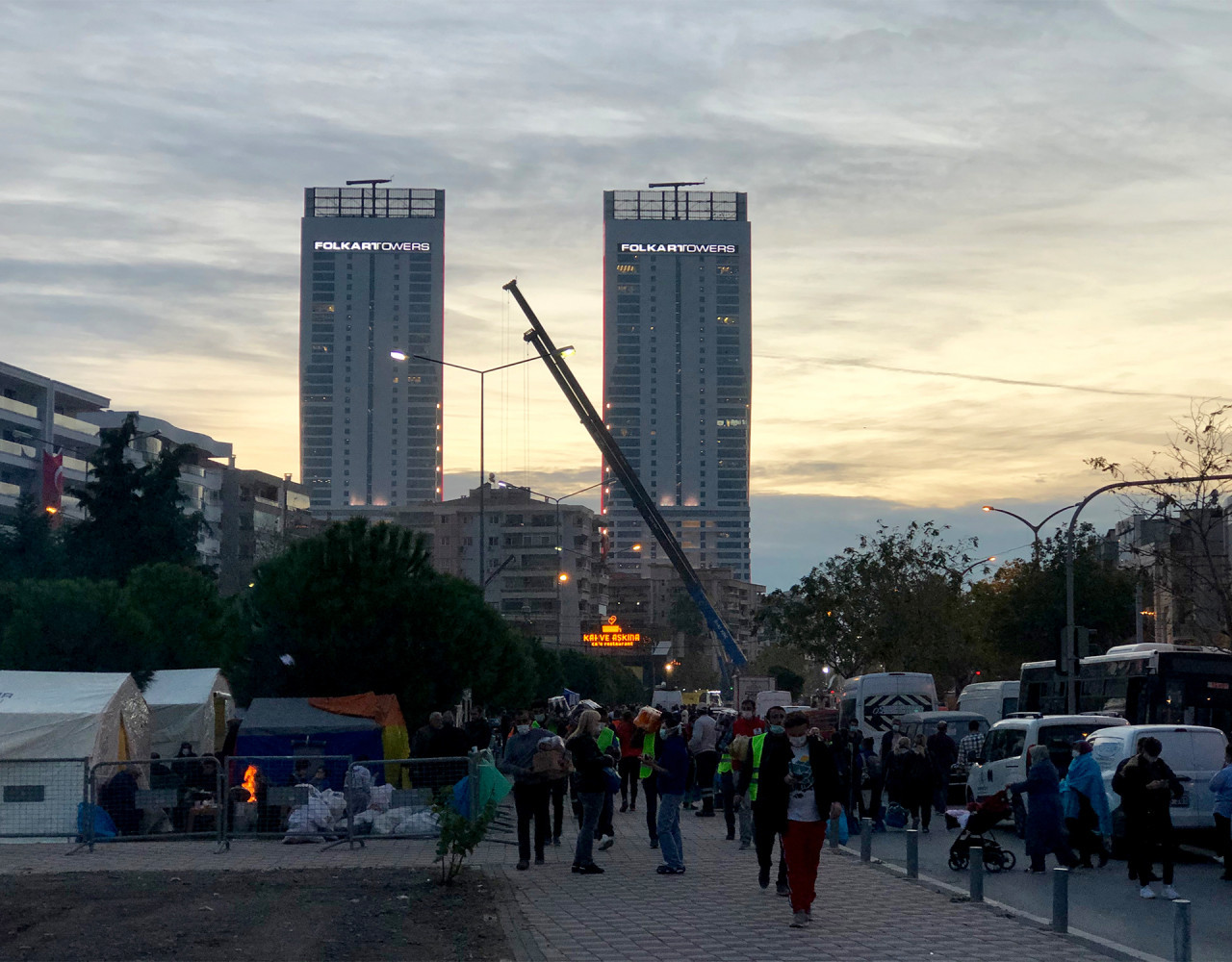
Negligence was also a major factor in the five-figure death toll of the 1999 earthquake. More than 2,000 lawsuits were filed against contractors, but 1,800 of them ended with no convictions. The heaviest punishment was handed to Veli Göçer, who was sentenced to 18 years for his role in the deaths of 195 people. Göçer served less than half of his sentence and was back in the construction sector as of 2016 after changing his company's name.
Greedy contractors have been around long before the ruling Justice and Development Party (AKP) came to power, but the current government has made Turkey's cities less rather than more resilient to natural disasters. A controversial 2018 “zoning amnesty” law paved the way for millions of applications from those wanting to officially register buildings that they constructed illegally. Over 800,000 of these applications came from İzmir, the highest per capita of any city in Turkey. One such building collapsed in Istanbul last year, killing 21 people in the process. Experts say that Istanbul is far from prepared for the anticipated massive earthquake.
When the news broke on October 30, volunteer crews rushed to İzmir from provinces all over the country after hearing news of the quake. This included a squad from the İzmit Municipality's Administrative Affairs department, led by Şenol Çalım.
“We are the ones that understand the people of İzmir the best,” Çalım said, referring to having lived through the earthquake that devastated his hometown. Çalım was twenty at the time, and lost a number of friends and relatives, including five nieces and nephews.
On the evening of August 16, 1999, as he was taking a stroll by the seaside in İzmit, two of Çalım's friends invited him over to stay at their house, but he didn't go as he had work the next day. They called him several times to come over, but could not convince him. The earthquake struck at 3 a.m. on August 17, and Çalım heard the news an hour later that his friends' building had collapsed and that they died inside it.
“We are providing food, clothing, beds, blankets, and heaters to people afraid to enter their homes, people whose homes have been damaged and people whose homes have been destroyed,” Çalım said. Still feeling the pain of the earthquake 20 years later, the city of İzmit launched a donation campaign and filled two semi-trucks to capacity within 24 hours. Çalım and his crew have been working long days assisting with the rescue efforts and handing out supplies, giving out tea to dozens of people who approached the tent during the evening as the weather grew chilly.
Amid the tragedy were the miraculous recoveries of 3-year-old Elif and 4-year-old Ayda, who were pulled out of the wreckage 65 and 91 hours later, respectively. Images of Elif with her arm raised high, tightly grasping the thumb of a rescue worker touched hearts all over Turkey. But while Elif and Ayda fought successfully for their lives against unfathomable odds, Elif's brother and Ayda's mother did not make it.
The pandemic and the earthquake were major blows to an İzmir that was riding high. The city was benefitting from an intense wave of Istanbulite transplants, which contributed to İzmir's property values rising the highest of any city in the world after Berlin in 2017. This led to a boom in nightlife in the popular districts of Bostanlı and Alsancak, where the energy was quixotic a year ago. İzmir today is by no means dead, but the recent coronavirus restrictions that require bars and restaurants to close at 10 p.m. cast a gloomy spell over the rejuvenated city.
Like Thessaloniki, to which Izmir is often compared, both cities were once home to a rich cosmopolitanism that was destroyed by war and nationalism during the first half of the 20th century. The Great Thessaloniki fire of 1917 displaced much of the city's Jewish population while the Great Izmir fire of 1922 devastated the city's Greek and Armenian areas. Yet İzmir is still loaded with signs of its multicultural past, some of them hidden in plain view, such as the ornate bay-windowed apartments built by the city's non-Muslim residents in the quarters of Alsancak and Basmane, or the numerous synagogues in the sprawling Kemeraltı bazaar. Boyoz, the city's most beloved snack, is a flaky, biscuit-like pastry eaten with hardboiled egg that is sold at stands throughout the city day and night. It comes from Sephardic Jewish cuisine.
The popular cliches about Izmir associate it with secularism, popular support for the main opposition Republican People's Party, palm trees, and the elegant Kordon promenade that flanks the gulf, but it is much more than a pleasant, easygoing city on the Aegean. Its population stands at three million, but it feels bigger. Public transportation has improved significantly in recent years with extensions to the suburban train line, metro, and the addition of a tramway. Though visitors are likely to see the buzzing center of Alsancak and its counterpart Karşıyaka on the other side of the gulf, Izmir is home to neighborhoods that feel worlds apart when they are merely minutes away.
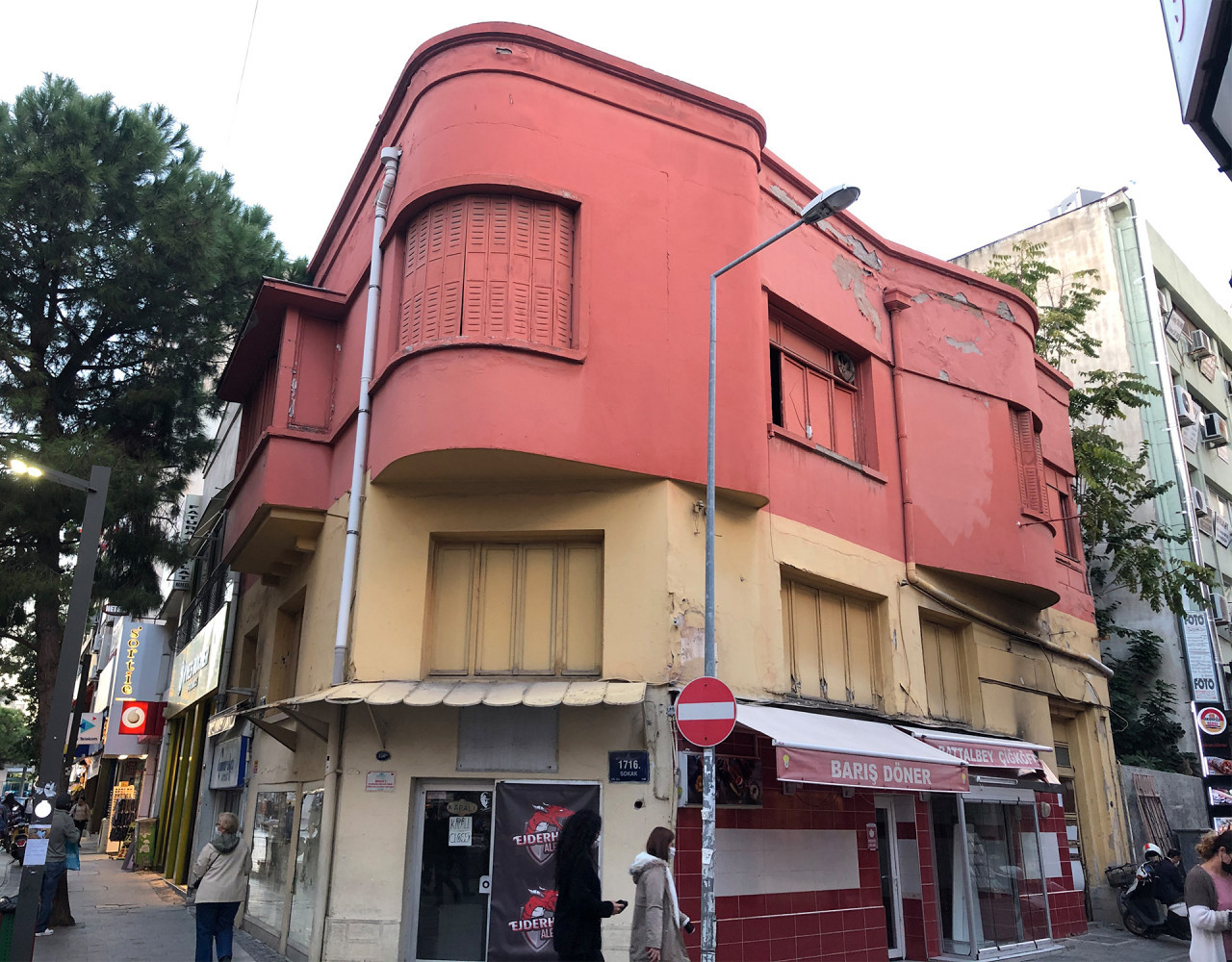
Massive, favela-esque neighborhoods such as Kadifekale are home to Roma, Kurds and Syrian refugees. Kadifekale (Velvet Castle) is a vast panorama of colorfully-painted homes located on a hill below a 3rd century Roman castle that stares out over the city. A Roman-era amphitheater was discovered in the middle of the neighborhood, resulting in the demolition of many of the informally-built homes in the area. Below Kadifekale is Basmane, Izmir's version of Istanbul's Aksaray, with its seedy hotels, darkly-lit bars, and large migrant population.
“During the 1990s, Bayraklı was not an (electoral) district. It was just a small neighborhood with some ramshackle old Greek houses. It had a very tiny population at the front side facing the sea before the construction of the Izmir Courthouse. The rest of it was part of a huge shanty town up to the hills including the Osmangazi neighborhood, where the latest earthquake hit as well. I was abroad for five years. Upon my return in 2013, I could hardly recognize the new district created in between the old Bayraklı I used to know and Bornova,” Soykan said.
There are quarters like Hilal and Murtake that are just on the edge of the city center but mostly ignored by those who don't live there. Murtake forms a triangular wedge between the highway and the İZBAN line. The neighborhood derives its name from the Greek Mortakia, meaning “place of the dead,” and it is said that the area was once a Greek burial ground. Today, most of its inhabitants are Roma, who live in small one- or two-story homes that have seen better days. There is an old Greek church that is today used as a coffeehouse. After numerous failed attempts, an urban transformation plan for Murtake was approved by the city last month.
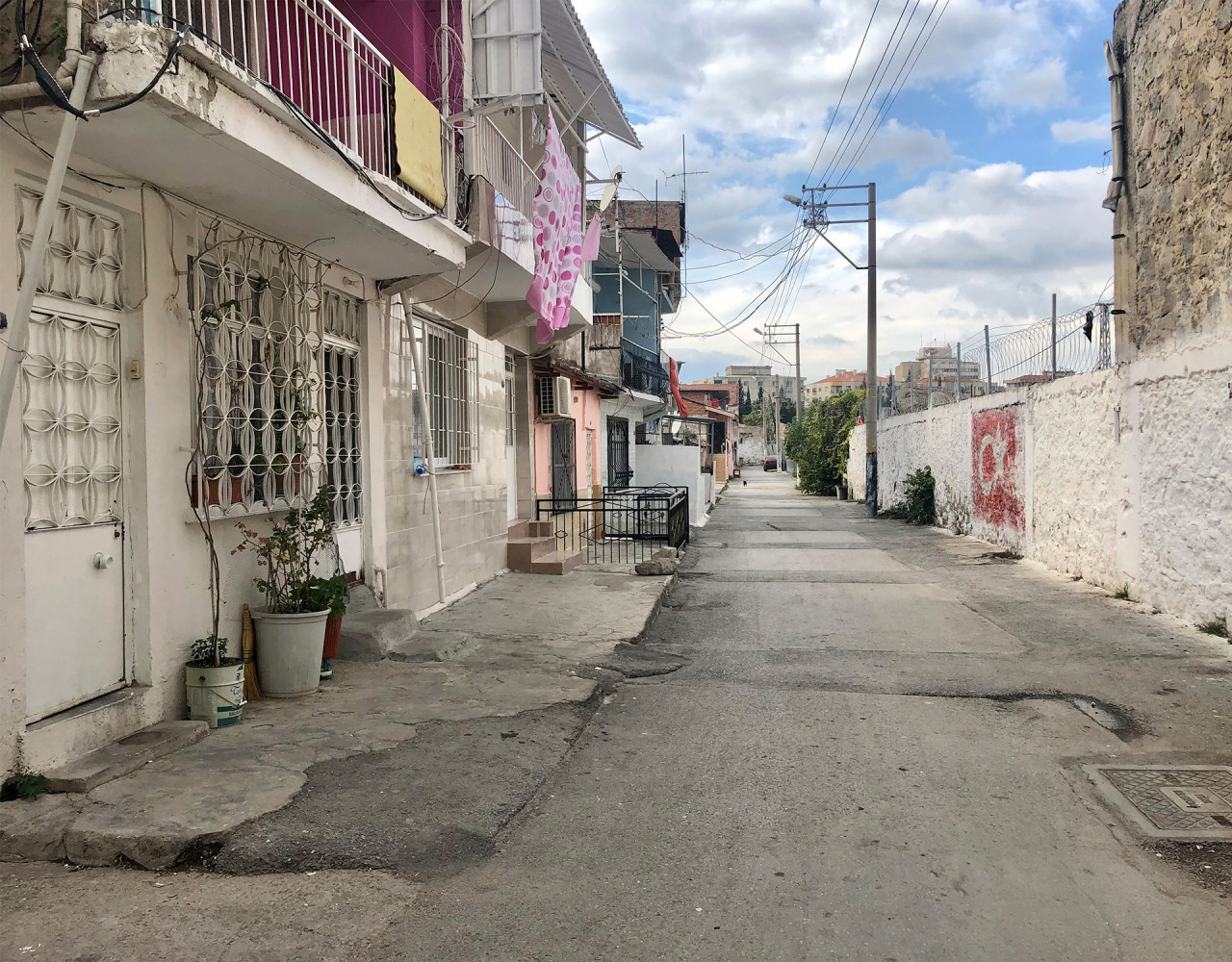
One resident told me that Murtake didn't sustain any damage in the earthquake. Sometimes modern multi-story buildings that appear solid crumble in a blink due to gross negligence while the shabby, aging houses of Murtake have weathered the storm. Turning the corner, there is commotion ahead on the street. Numerous people are outside and several police are standing by. Two officers stop and search me for drugs after not being satisfied with my explanation that I am a journalist going to different areas of the city and talking about the earthquake. On the other side of the train tracks I head through Hilal. At the edge of the neighborhood, a young man with an overly friendly smile bumps my fist and asks if I need drugs, rattling off a list of illegal substances as he follows me across the street. Time to leave.
Right before the sun set, I hopped on a ferry at the pier in Alsancak bound for Karşıyaka. The busy streets of the district's center buzzed as people shopped and dined, the weather was mild and Bayraklı felt far away. As night fell, countless lights gleamed across the gulf, and the dazzling view of central İzmir was enchanting.
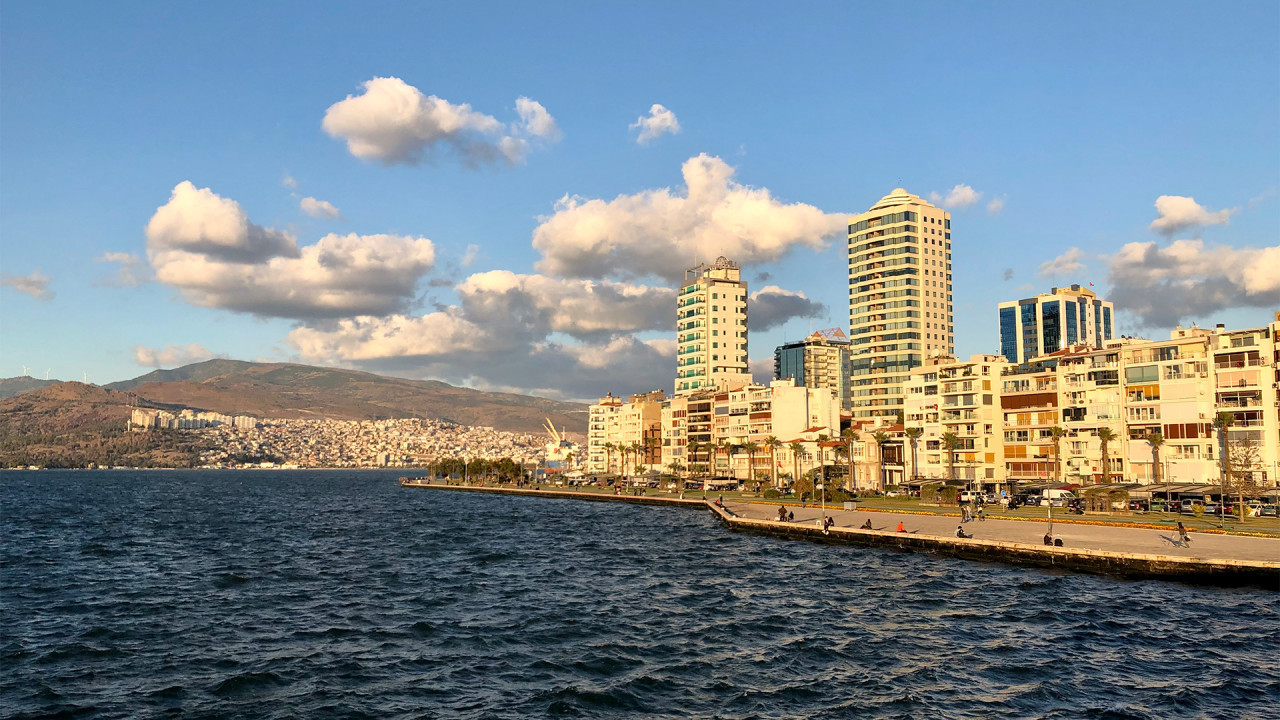
“Your home is your sanctuary, the place where you are supposed to feel safe and comfortable. The earthquake has robbed us of that feeling. It is now replaced by a strong fear that the same thing will soon hit us again in the high-rise concrete deathtraps we call our homes,” Kıncal said.
“If there is a silver lining to all this horror we lived through, it was İzmir's spirit. We have lost lives, livelihoods and homes. But we didn't lose the sense of solidarity and trust to deal with this disaster.”
